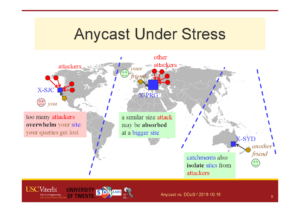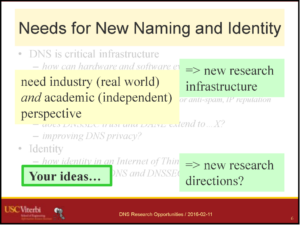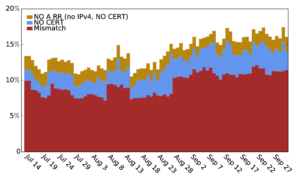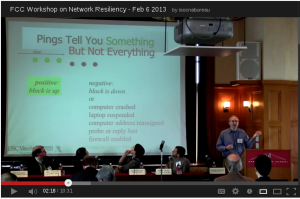John Heidemann gave the talk “Distributed Denial-of-Service: What Datasets Can Help?” at ACSAC 2016 in Universal City, California, USA on December 7, 2016. Slides are available at http://www.isi.edu/~johnh/PAPERS/Heidemann16d.pdf.
Distributed Denial-of-Service attacks are continuing threat to the Internet. Meeting this threat requires new approaches that will emerge from new research, but new research requires the support of dataset and experimental methods. This talk describes four different aspects of research on DDoS, privacy and security, and the datasets that have generated to support that research. Areas we consider are detecting low rate DDoS attacks, understanding the effects of DDoS on DNS infrastructure, evolving the DNS protocol to prevent DDoS and improve privacy, and ideas about experimental testbeds to evaluate new ideas in DDoS defense for DNS. Datasets described in this talk are available at no cost from the author and through the IMPACT Program.
This talk is based on the work with many prior collaborators: Terry Benzel, Wes Hardaker, Christian Hessleman, Zi Hu, Allison Mainkin, Urbashi Mitra, Giovane Moura, Moritz Müller, Ricardo de O. Schmidt, Nikita Somaiya, Gautam Thatte, Wouter de Vries, Lan Wei, Duane Wessels, Liang Zhu.
Datasets from the paper are available at https://ant.isi.edu/datasets/ and at https://impactcybertrust.org.

![Comparing actual (obtained) anycast latency against optimal possible anycast latency, for 4 different anycast deployments (each a Root Letter). From the talk [Heidemann16b], based on data from [Moura16b].](https://ant.isi.edu/blog/wp-content/uploads/2016/10/Heidemann16b_icon-300x212.png)




